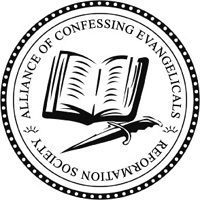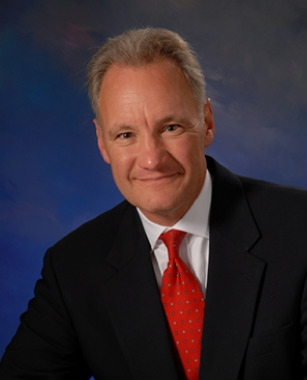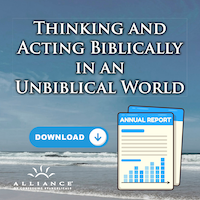The Exercise
 In 1579 the General Assembly of the Church of Scotland declared that "the exercise may be judged a Presbytery.” The history of Presbytery is inextricably intertwined with a practice known throughout the Reformed Church as the Exercise. And yet there are elements essential to the Exercise which are almost unknown in 20th century presbytery meetings. Many would say the 15th century Exercise more nearly resembled a 20th century Bible Study or Bible Class than a presbytery meeting.
In 1579 the General Assembly of the Church of Scotland declared that "the exercise may be judged a Presbytery.” The history of Presbytery is inextricably intertwined with a practice known throughout the Reformed Church as the Exercise. And yet there are elements essential to the Exercise which are almost unknown in 20th century presbytery meetings. Many would say the 15th century Exercise more nearly resembled a 20th century Bible Study or Bible Class than a presbytery meeting.
One chapter of the First Book of Discipline, written largely by John Knox, for the new Reformed Church in Scotland is devoted to the Exercise and in the first paragraph he states their purposes.
To the end that the Church of God may have a trial of men's knowledge, judgments, graces and utterances; and also, that such as somewhat have profited in God's word may from time to time grow to more full perfection to serve the church as necessity shall require; it is most important that in every town where schools and repair of learned men are that there be one certain day every week appointed to that exercise which St. Paul calleth prophesying.
The agenda for the Exercise was specified. Each group might choose their own day of the week and the book of Scripture to be studied, but beyond that they must follow the outline as, Knox and other Reformers interpreted it, from I Corinthians 14:19ff. The Scripture for the day was read. One man explained it and “in that exercise may not take to himself the liberty of a public preacher, yea, although he be a minister appointed; but he must bind himself to his text, ‘use no invective,” be "short” in exhortations or admonitions, "that the time may be spent in opening the mind of the Holy Ghost in that place” and "in following the style and dependence of the text." Then a second man “adds” confirming, correcting or further explaining. A third man spoke briefly “in case some things were hid from one and from the other.” All speakers were then removed and "censured" or "admonished,” apparently their peers (that did not necessarily mean adversely criticized) and lastly came the discussion of questions and doubts by all present. Strict warnings were directed against “debate and strife, curious, peregrine and unprofitable questions, all interpretations leading to heresy, “repugnant to charity,” or in plain contradiction to any other Scripture.
The exercise was not invented for the Reformed Church in Scotland. It was a common practice, with some variations, throughout the Reformed Church at the time of her greatest growth. In the “form of prayers” book that Knox had used for the English Congregation in Geneva, Switzerland (1556). There is a paragraph which requires that once every week the congregation shall assemble to hear the Scriptures “orderly expounded.” At which time it is lawful for every man to speak or enquire, as God shall move his heart.”
Calvin’s meetings, proscribed in the Ecclesiastical Ordinances (1541), took place every Friday. An eyewitness described how one minister expounded, then another followed and then all members were allowed to make observations. He too said it was an imitation of the custom of the Church of Corinth as described by Paul. Zwingli, writing on the subject in Zurich in 1525, denounced the Anabaptists and described the prophet as the teacher-scholar of Acts 13:1. In his weekday meetings all people and ordinary citizens could make criticisms or additions.
In 1550 John Lasco, pastoring a Reformed Church for Protestant refugees in London, made provision for members of the congregation to bring in questions through their leaders. In France the Discipline or Book of Order (1559) prepared for the Reformed Churches throughout the nation, specified that at the meetings of the Colloquies, “the ministers each in turn, shall expound the word of God, so that each may show how he practices the study of the scripture and the method and manner of treating the same.” There is no reference to participation by other church members. A similar practice was introduced in Holland in the 17th century.
The Puritans in England (1571-1574) revived the practice, specifying that the entire meeting last no longer than two hours: first speaker three-quarter of an hour, second and third not to exceed one-quarter hour with a conclusion by the “moderator.” In England and perhaps in France it appears that the Exercise was primarily for the purpose of maintaining or upgrading the competency of the ministers. “As iron sharpeneth iron, so a man sharpeneth the countenance of his friend.”
Whether or not the rank and file member could participate is important because of the influence of the Anabaptists. They too based their right to “prophesy” according to their “inner light,” on 1 Corin. 14. Whereas the Reformed Churches insisted that the work of the Holy Spirit now is not to give new light in the form of more revelation, but to interpret the one and only Revelation which came through Jesus Christ. This was to be done via diligent study of the languages in the texts of the Old and New Testaments, Romanists too were looking at .anabaptistic "prophesyings" as the logical development of the Reformation with its insistence on personal Bible study and the resultant breaking down of the partition between clerical and lay.
The anabaptist influence helps to account for the early abandonment of these meetings in many areas of the new Reformed Church. The risk of being identified with their excesses was too great to be tolerated. And this risk has continued to influence men's attitudes toward the Exercise. H. H. Kuyper, for example, is anxious to insist that laymen were not allowed to participate in Calvin's meetings in Geneva and cites as evidence the case against Bolsec in 1551. But the charges state that Bolsec had "presumptuously, rashly and contrary to order, risen in the sacred congregation accustomed to be held in the city every Friday morning by the local ministers." His sentence says he “very audaciously rose in the sacred congregation of our ministers and there proposed opinions that were false and contrary to the sacred scriptures and the pure evangelical religion.”
The minutes of the meeting on 16 October 1551 state that one man preached on John 8, another added and then Bolsec argued his point, which called forth a long response from Calvin and led to Bolsec’s arrest at the close of the meeting. It seems to me the facts do not warrant Kuyper’s conclusions. The objection was to the heresy not to the speaking. If Bolsec's views had been correct there would have been no objection to his speaking. But the point is that in spite of the real risks and dangers inherent in repeated incidents such as these, Zwingli, Calvin, Knox and others throughout the Reformed Church continued to prescribe the Exercise as “most expedient” or “most necessary.”
Knox rested his case for these meetings on a study of 1 Corin. 14:29ff, and quotes it in the Chapter on the Exercise. They appear to have been an important outworking or development of the doctrine of the priesthood of all believers, closely coupled to the conviction that a “knowledge of God and of ourselves” is basic to all Christian growth. Matters of faith and worship are not matters of emotional magic which benefit ex opere operato. The early reformers had seen in these verses a means, a type of meeting ordained by God, whereby men might learn to respond to His Invitation to come to reason together with Him, that "in understanding" they might become men.
In summarizing, it seems fair to say that the Reformed Church, at the time of her greatest growth, believed that God had designed this type of meeting to accomplish four things. (1) To develop leadership. They believed the Exercise provided the setting and situation which would identify and further develop those gifts and graces which God had built into the lives of men whom He was adding daily to His Church, and so call them to the attention of the church-as-a-whole that they would be promoted to the positions of leadership and responsibility which He intended them to have. (2) To help young Christians to grow up into spiritual maturity. Not only could they learn actual doctrine and content by listening and asking questions, they also could learn how to learn more by observing the study methods and growth patterns of older Christians and thus as Knox put it, "be encouraged daily to study and proceed in knowledge.” (3) To recruit new leadership by giving everyone a sense of personal responsibility for the continuing development of the Church as a whole, and to keep the Church mindful of the practical needs and developing maturity in the lives of the individual Christians who were being rapidly added to the church in those days. (4) To continue upgrading the competency of the teaching ministry.
In making 20th century comparisons we see some similarities between the Reformation Exercise and "Trials" or "Student Preaching" by seminarians today. But what fully ordained and perhaps aging Pastor today would welcome "censure" even by his peers, for his methods of study, preparation and delivery, and his doctrinal content?
There are similarities between an Exercise and a 20th century Bible Study, but exceptions must he made. If we classify modem Bible Studies under three types: (1) Where no one comes prepared and we share mutual ignorance about the text. (2) Where only one "professional" comes prepared and all others give a nodding assent, (3) Where all come prepared and we "share” equally; then we still have not described the Exercise. For in it all came prepared, but one who was recognized by others as specially qualified and spiritually mature expounded the Word and explained how he got it as well as what the doctrine was. The two others who were also recognized as being specially qualified and mature "added." Finally others asked questions, added, and the church as a whole learned together. In some ways the Exercise was more like a 20th century Bible Class or a Seminar than a Presbytery meeting. And it must be remembered that in spite of 15th century communication and transportation problems, and the extraordinary responsibilities weighing heavily on every member of the Reformed Church in lands as yet unreached by the Gospel, the Exercise meetings were held each week.





















